
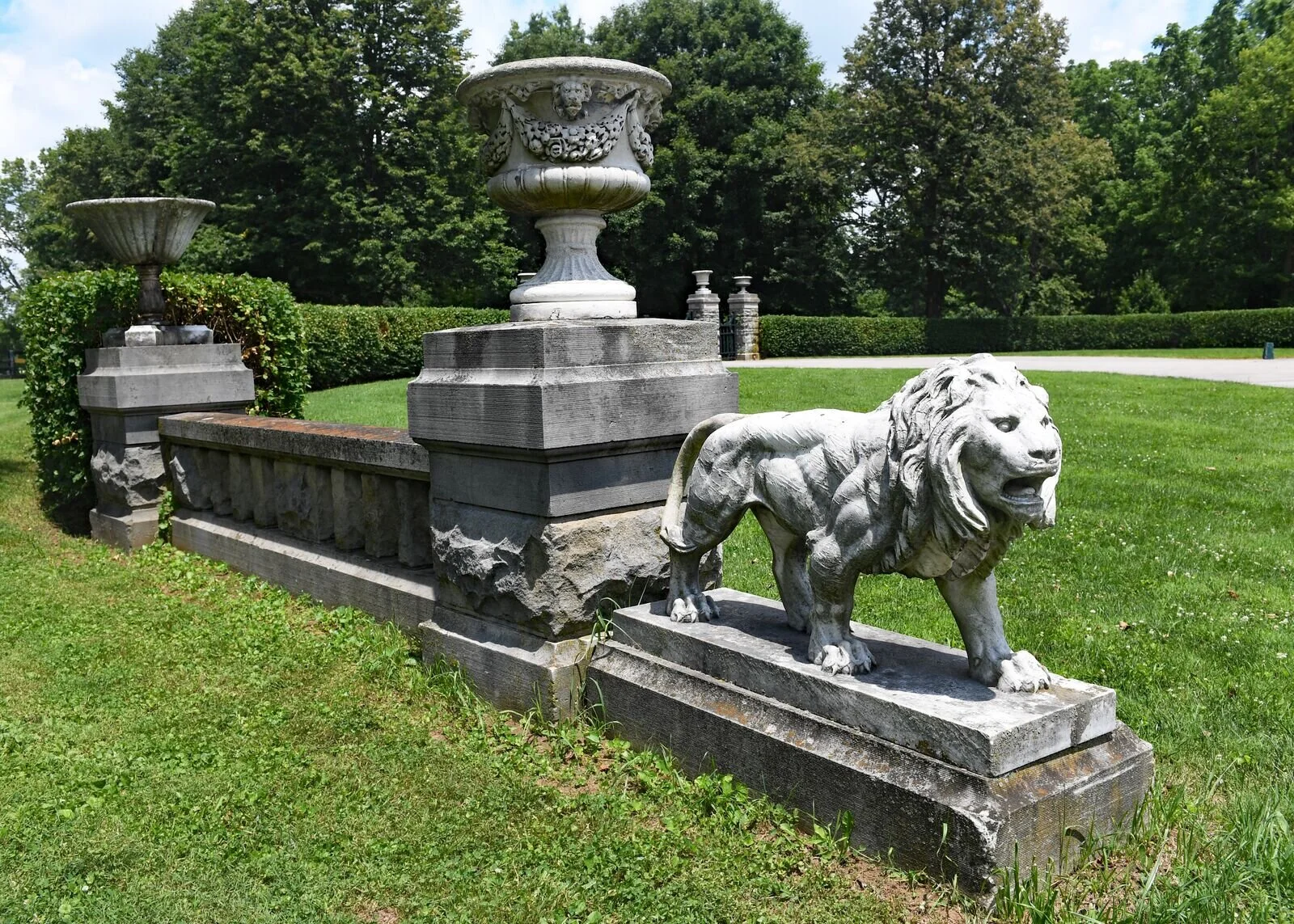
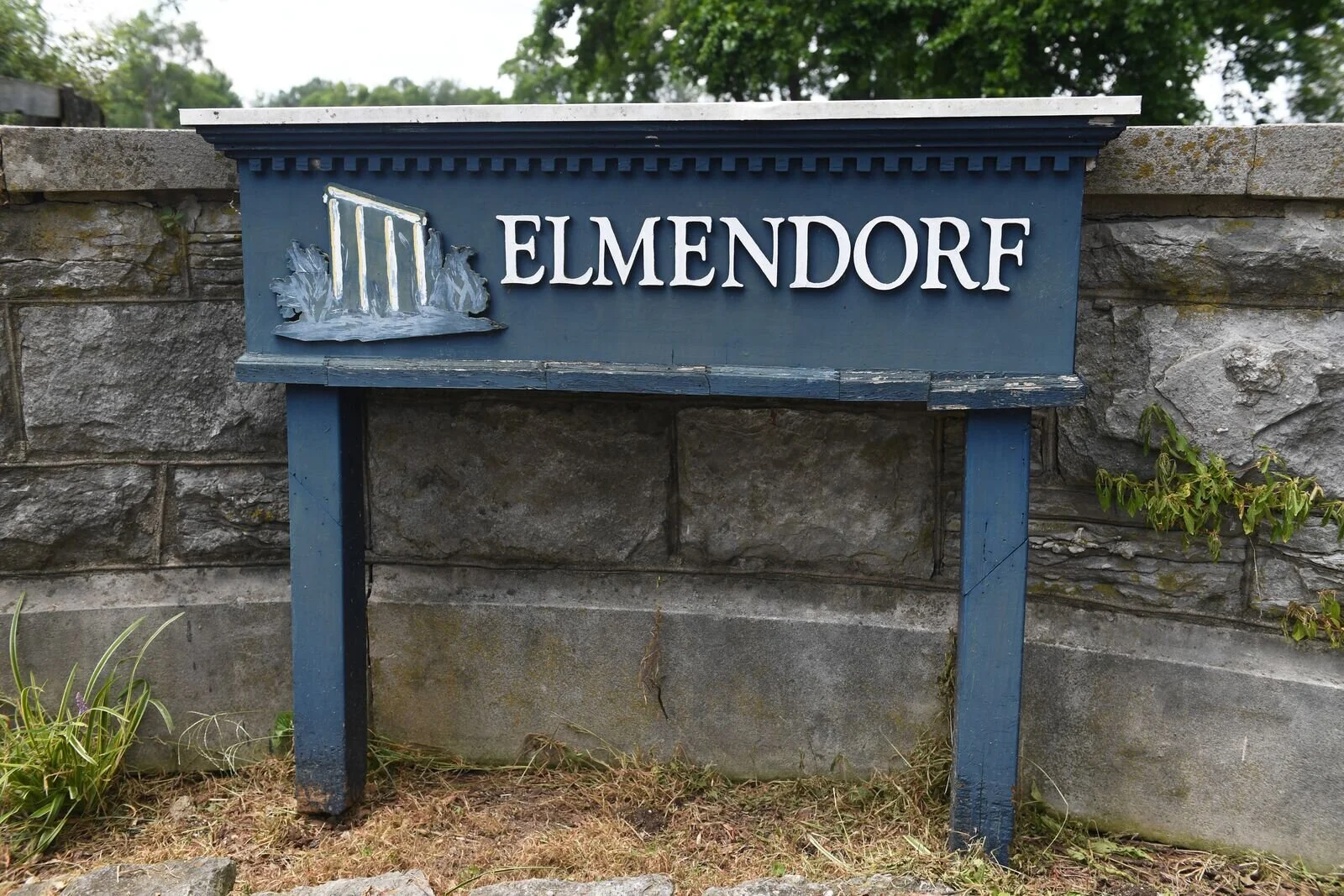
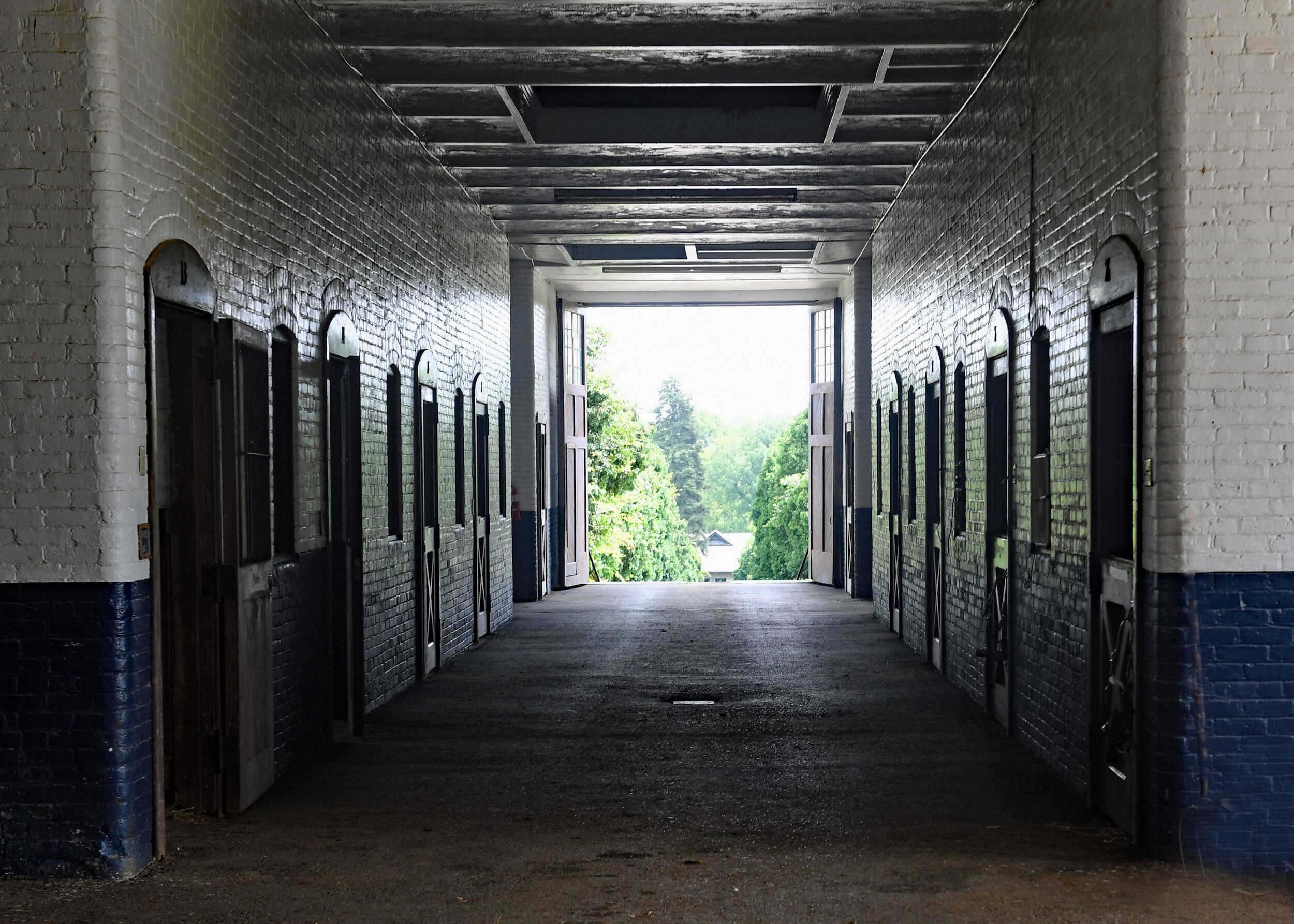
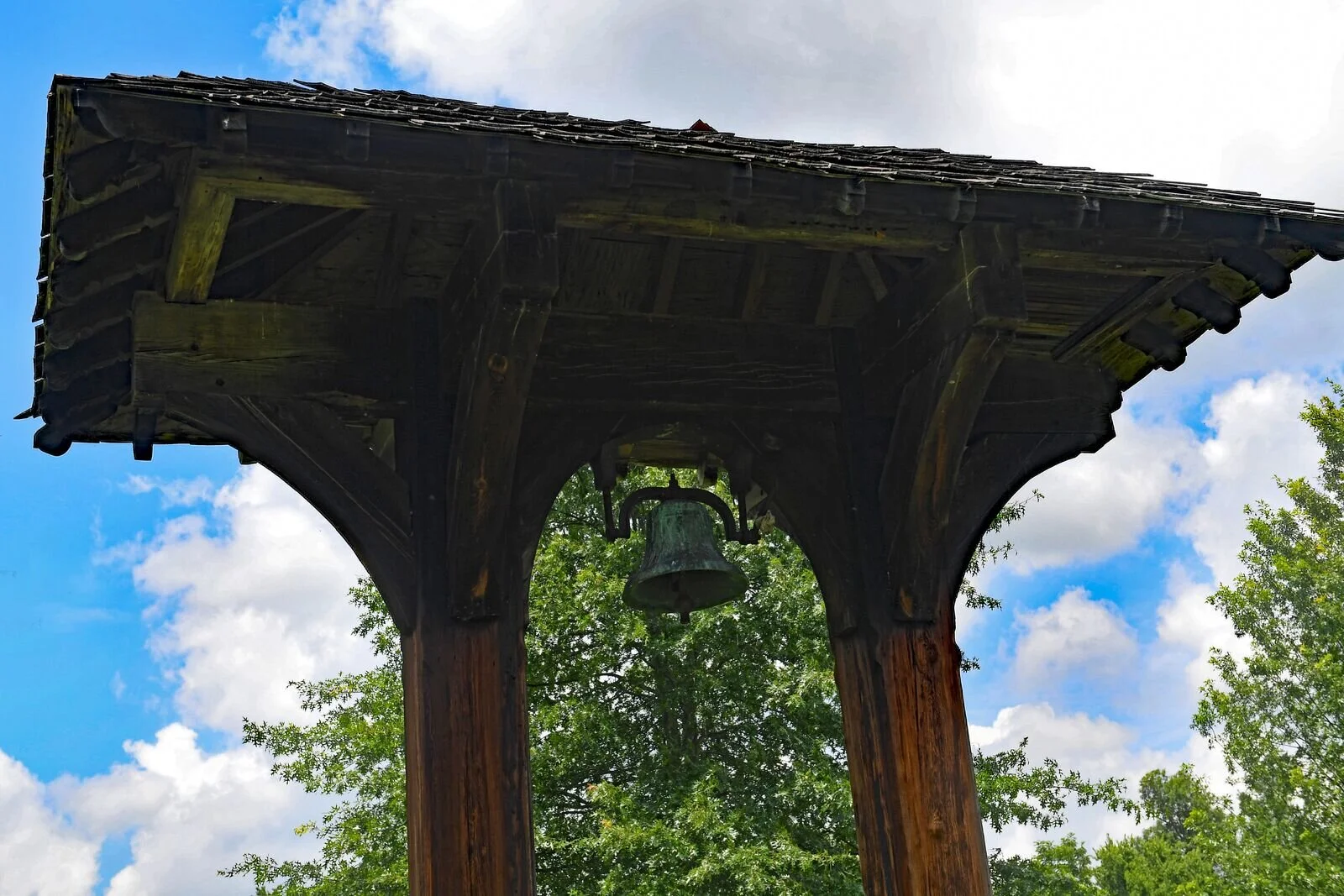

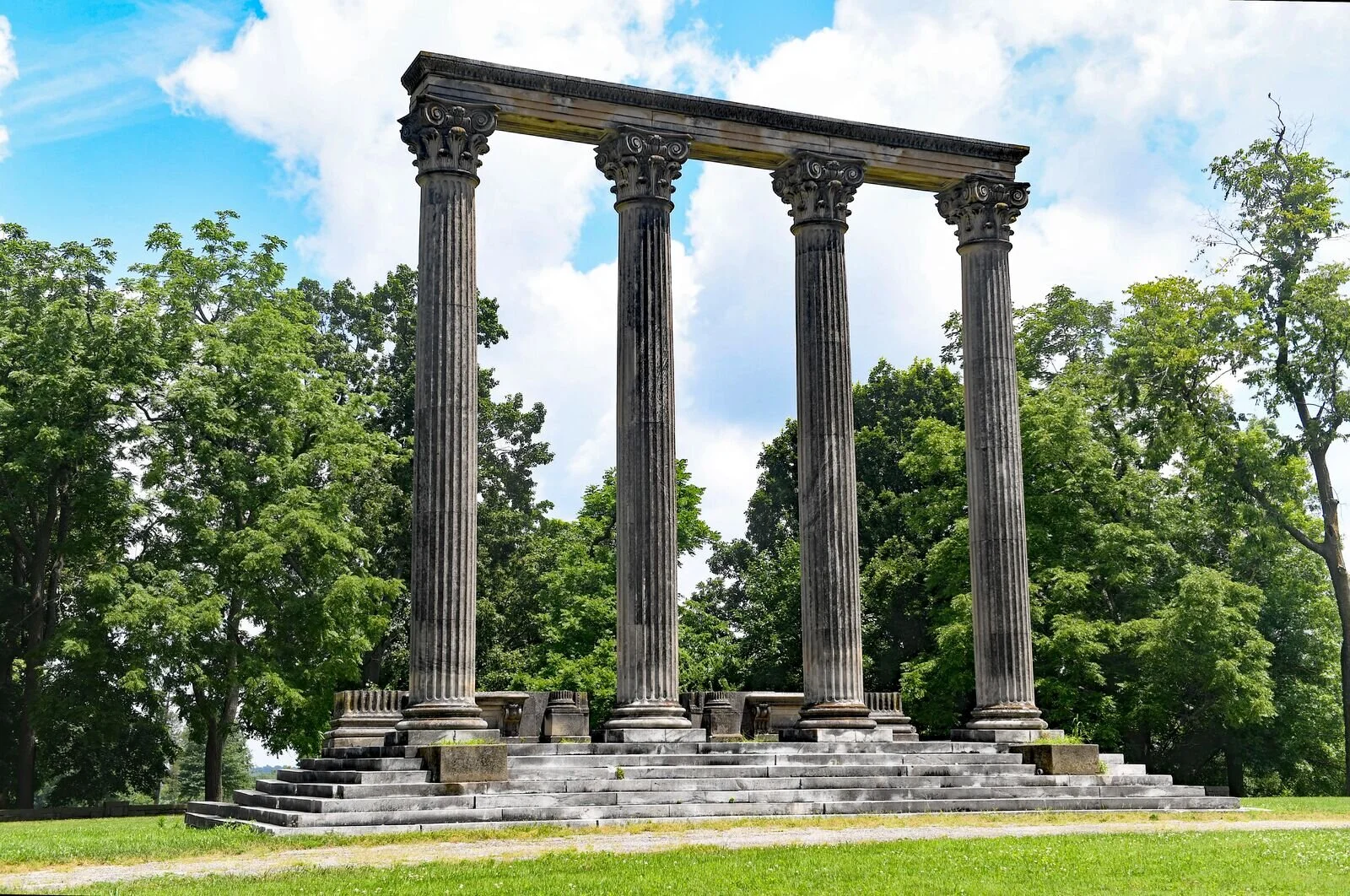



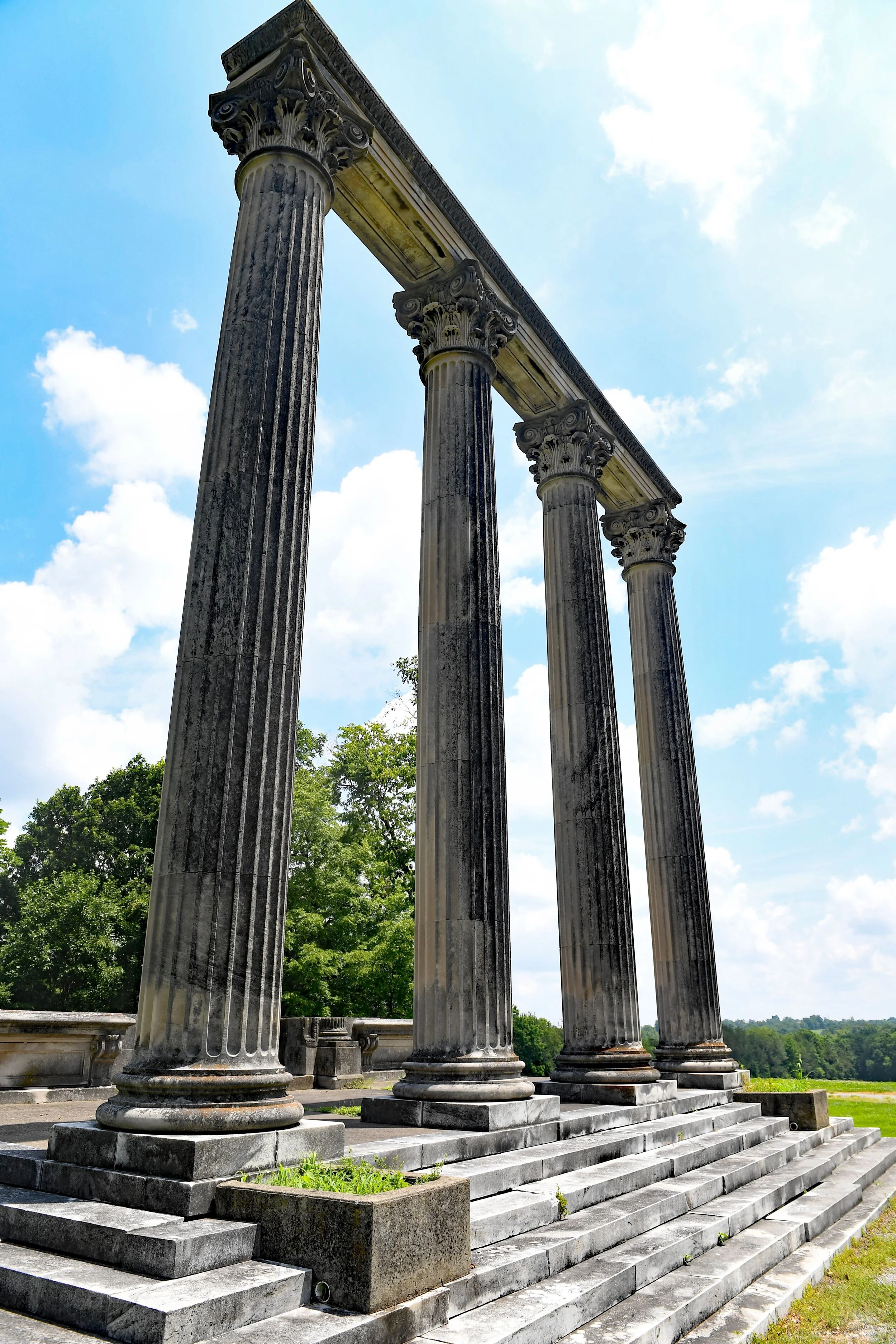

The Pillars and Lions at Elmendorf
By: Tom Ferry
The Roman Colosseum, The Parthenon, Stonehenge — The appeal of these and other remarkable ruins is that they allow us to envision what might have been based on what’s left behind. In the world of horse racing, historic Elmendorf Farm in Lexington, Kentucky, is such a place.
Few Thoroughbred racing and breeding operations have impacted the industry the way Elmendorf Farm has across its history. Numerous Kentucky Derby (G1) champions and Hall of Famers have called the farm home. Nearly 150 years have gone by since Milton H. Sanford purchased these 544 acres of land off of the Paris Pike and Iron Works Pike corridor six miles north of Lexington. Sanford named the farm Preakness Stud after his horse, Preakness, the horse for whom the Preakness Stakes (G1) is named. In 1881, Daniel Swigert purchased the farm and renamed it Elmendorf after his wife’s grandmother, Blandina Elmendorf Brodhead.
Sixteen years later, then 74 year-old multimillionaire, mining operator, attorney, rancher, and horse owner and breeder James Ben Ali Haggin came to Kentucky in search of a farm for his stable that would allow his 28 year-old fiancé to be closer to her family. Haggin purchased Elmendorf and over the next decade he would expand the 500+ acre farm to nearly 8,900 acres through the purchase of many of the surrounding farms and parcels of land. Not only would he become the largest land owner in all of Kentucky, but Haggin also became the largest Thoroughbred horse breeder in the world, securing nearly 2,000 horses and producing between 200 to 400 yearlings each year.
Inspired by the renowned Biltmore Estate in Ashland, North Carolina, Haggin set about building a dream home for he and his new wife at the beginning of the 20th century. Named Green Hills, construction of Haggins’ great southern mansion cost $300,000, which equates to nearly $8 million today. It sat on a small hill overlooking the North Elkhorn Creek. The finished product was a three-story brick and white marble manor, supported by four 25-foot Corinthian stone pillars. Six steps led up to Green Hills’ front portico, which was guarded on opposite sides by two Italian marble lions. Along the way, Haggin made additions to the grounds – a model dairy farm, stallion complex, training center, power plant, a greenhouse filled with exotic plants, and more than 200 head of Dexter cattle.
Three historic structures built during this era still stand on the farm today: The Combination Barn, which housed stallions and coaching horses and provided sleeping quarters for men who tended to the horses; The Berryman House, a two-story residence constructed for general manager Charles Berryman near the main entrance; A carriage house or “Coach Barn” built behind Green Hills that contained 16 stalls for carriage horses.
James Haggin managed the farm well into his eighties and died without a will in 1914 at age 91; In the decade that followed, Elmendorf was broken up into several parts.
In 1923, Joseph E. Widener, who was a major figure in Thoroughbred horse racing at the time, and his nephew, George, purchased a portion of the farm —Joseph ran his portion as Elmendorf and George operated his portion as Old Kenney Farm.
By 1929, Joseph Widener and his wife had moved into the Berryman House and the Green Hills mansion was vacant. To void the heavy taxes on the estate, Widener had the home razed, leaving only the four pillars as a tribute to a man, a time and a place. Almost as iconic as the four pillars is the Lion’s Circle.
As visitors enter the farm at the Iron Works Pike gate, a 100 foot-wide macadamized road leads to the circle bordered by bookend lion statues that mark the 3/4-mile drive to Green Hills. Lying within the grass hedges of the circular intersection are close to 30 headstones marking the final resting place of many legendary horses including Eight Thirty, Affectionately and Miss Dogwood.
As years rolled by, most of the 8,900 acres once owned by James Haggin were sold off and different farms were created. Today, much of the original land is occupied by Normandy, Green Gates, and Clovelly farms. The 500-acre historic Elmendorf Farm is still there as well and is owned by the late Dinwiddie Lampton Jr. family’s American Life and Accident Insurance Company.
Among the occupants of a large portion of the Elmendorf land today is Sancal Racing. Turkish native and stakes-winning trainer Murat Sancal came to the United States in 2010 and, along with assistant trainer Maria Sol Aller, has built one of the country’s fastest-growing racing and breeding operations. Sancal’s racing enterprise is based at Churchill Downs and Keeneland for all but the winter months when it moves to Palm Meadows in Boynton Beach, Florida. Their breeding operation runs year-round and among the broodmares at the farm is Common Hope, the dam of the late, great Shared Belief. Sancal bred and races Shared Legacy, a four year-old full-brother to Shared Belief.
Another resident of the farm is Jeff and Melanie Ramey’s Stone Column Stables at Elmendorf. The premium equestrian facility specializes in individual care for the horse and accommodates show horse stall rentals for the Kentucky show season, retirement, broodmare and young horse boarding, and rehabilitation layups.
On a late fall day in Lexington, when the leaves have fallen from the trees in Central Kentucky, you can see the four pillars of Green Hills from a distance on Iron Works Pike. The landmark is a popular backdrop for local wedding and engagement portraits. The twin standing lion statues, which for so many years flanked the portico of Green Hills, have since moved and now stand guard at the farm’s front gate on Paris Pike. The Lion’s Circle also remains and the historic barns and buildings of Elmendorf still dot the landscape. All are lasting reminders of days gone by, but also signs of a promising tomorrow.